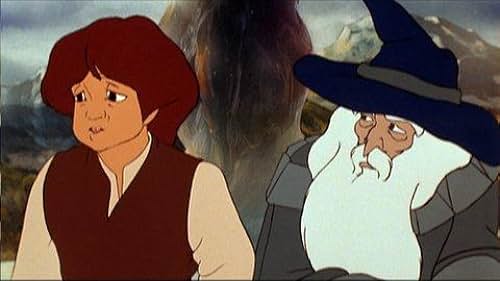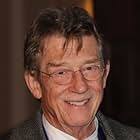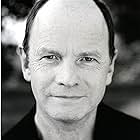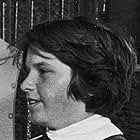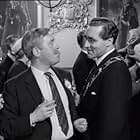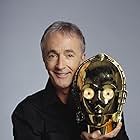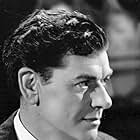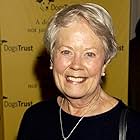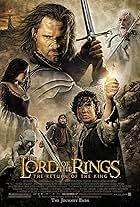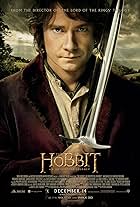The Fellowship of the Ring embark on a journey to destroy the One Ring and end Sauron's reign over Middle-earth.The Fellowship of the Ring embark on a journey to destroy the One Ring and end Sauron's reign over Middle-earth.The Fellowship of the Ring embark on a journey to destroy the One Ring and end Sauron's reign over Middle-earth.
- Director
- Writers
- Stars
- Awards
- 1 win & 3 nominations total
Christopher Guard
- Frodo
- (voice)
William Squire
- Gandalf
- (voice)
Michael Scholes
- Sam
- (voice)
Simon Chandler
- Merry
- (voice)
Dominic Guard
- Pippin
- (voice)
Norman Bird
- Bilbo
- (voice)
Michael Graham Cox
- Boromir
- (voice)
- (as Michael Graham-Cox)
Anthony Daniels
- Legolas
- (voice)
David Buck
- Gimli
- (voice)
Peter Woodthorpe
- Gollum
- (voice)
Fraser Kerr
- Saruman
- (voice)
Philip Stone
- Theoden
- (voice)
Michael Deacon
- Wormtongue
- (voice)
André Morell
- Elrond
- (voice)
- (as Andre Morell)
Alan Tilvern
- Innkeeper
- (voice)
Annette Crosbie
- Galadriel
- (voice)
John Westbrook
- Treebeard
- (voice)
- Director
- Writers
- All cast & crew
- Production, box office & more at IMDbPro
Featured reviews
I'm fond of this film and it vexes me that so many "reviewers" rank it below the Peter Jackson trilogy. A filmed novel is always interpretive; in particular an animated film relies on the artist's vision and should be judged on its own terms. Speaking as a purist, this is a finer homage to Tolkien than the updated version. While this film has its flaws it stays truer to the source, especially so far as the characters are concerned.
In the Jackson version Tolkien's Frodo is barely recognizable: from the first scenes he is portrayed as a weakling, constantly wavering, manipulated by forces around him and never standing on his own two feet (this is physically and metaphorically true.) You wonder why fate chose this limp biscuit to carry the one ring to the Cracks of Doom. Jackson unforgivably rewrites Tolkien and robs Frodo of his finest moment when he allows Arwen to rescue him from the Ringwraiths...Bakshi's version respects the original, presenting a Frodo who demands the wraiths "Go back and trouble me no more!" Bakshi sustains Frodo's character as Tolkien conceived it. We see his decline as the weight of his burden increases. Frodo is so pivotal to Lord of the Rings you wonder why Jackson took such liberties (he does so with numerous characters)since character development propels the plot to its inevitable conclusion. Bakshi's film better explores the companionship between Legolas and Gimli in a few judicious scenes that are completely lacking in Jackson's version. Similarly we see Boromir horsing with Pippin and Merry, furthering the idea of fellowship. For my liking the camaraderie is more developed in the animated version than the live action.
Tolkien's poetry is an important ingredient in the novels and Bakshi makes tribute to this in one of my favorite scenes: when Frodo sings the "Merry Old Inn" song, minutes before stumbling into Strider. The cheery tune is chillingly juxtaposed with the darker theme music when seconds later, invisible to his friends but visible to the wraiths, Frodo is dangerously exposed. This is one of the most atmospheric portions of the film and chills me whenever I see it.
The well documented budget/time restrictions limit this film's final impact but had it been completed it may have resonated with more viewers. As it is, it's worth a look. Even its detractors admit that Peter Jackson derived much of his inspiration from this prototype.
In the Jackson version Tolkien's Frodo is barely recognizable: from the first scenes he is portrayed as a weakling, constantly wavering, manipulated by forces around him and never standing on his own two feet (this is physically and metaphorically true.) You wonder why fate chose this limp biscuit to carry the one ring to the Cracks of Doom. Jackson unforgivably rewrites Tolkien and robs Frodo of his finest moment when he allows Arwen to rescue him from the Ringwraiths...Bakshi's version respects the original, presenting a Frodo who demands the wraiths "Go back and trouble me no more!" Bakshi sustains Frodo's character as Tolkien conceived it. We see his decline as the weight of his burden increases. Frodo is so pivotal to Lord of the Rings you wonder why Jackson took such liberties (he does so with numerous characters)since character development propels the plot to its inevitable conclusion. Bakshi's film better explores the companionship between Legolas and Gimli in a few judicious scenes that are completely lacking in Jackson's version. Similarly we see Boromir horsing with Pippin and Merry, furthering the idea of fellowship. For my liking the camaraderie is more developed in the animated version than the live action.
Tolkien's poetry is an important ingredient in the novels and Bakshi makes tribute to this in one of my favorite scenes: when Frodo sings the "Merry Old Inn" song, minutes before stumbling into Strider. The cheery tune is chillingly juxtaposed with the darker theme music when seconds later, invisible to his friends but visible to the wraiths, Frodo is dangerously exposed. This is one of the most atmospheric portions of the film and chills me whenever I see it.
The well documented budget/time restrictions limit this film's final impact but had it been completed it may have resonated with more viewers. As it is, it's worth a look. Even its detractors admit that Peter Jackson derived much of his inspiration from this prototype.
I won't dwell on the purists' outrage over Bakshi's liberties with story or characters. For the most part, they are correct. I'm certainly not coming to the filmmaker's defense, but in the context of the material's density, animation technology of 1978, et al., this guy really took a swing at bringing this thing to the silver screen.
Sadly, the film wasn't that good. Much of the animation was disjointed, and most of the backgrounds were crudely drawn and failed to create the correct atmosphere that one gets from reading the book. I will say, though, that I have always liked the rotoscoping, in particular that of the orcs. There is something exceedingly frightening about the way they are displayed, something today's CGI characterizations seems to miss. Bakshi used this technique in his other works as well, particularly in Wizards, which is a better, if different, film than his version of LotR. But mixing purely-drawn characters (hobbits) with those that are rotoscoped (orcs) just didn't look right here.
I must agree with some others who assert that some of the frame direction and scene selection is oddly similar to Peter Jackson's version of late. And if Jackson was influenced by at least SOME of the look of Bakshi's film, then what's the harm?
If you want to be dazzled, this version of LotR probably won't rouse you. There's many more misses than hits. But it isn't as bad as many would have you believe. If it weren't a Tolkien adaptation, I think it would be received much better.
Sadly, the film wasn't that good. Much of the animation was disjointed, and most of the backgrounds were crudely drawn and failed to create the correct atmosphere that one gets from reading the book. I will say, though, that I have always liked the rotoscoping, in particular that of the orcs. There is something exceedingly frightening about the way they are displayed, something today's CGI characterizations seems to miss. Bakshi used this technique in his other works as well, particularly in Wizards, which is a better, if different, film than his version of LotR. But mixing purely-drawn characters (hobbits) with those that are rotoscoped (orcs) just didn't look right here.
I must agree with some others who assert that some of the frame direction and scene selection is oddly similar to Peter Jackson's version of late. And if Jackson was influenced by at least SOME of the look of Bakshi's film, then what's the harm?
If you want to be dazzled, this version of LotR probably won't rouse you. There's many more misses than hits. But it isn't as bad as many would have you believe. If it weren't a Tolkien adaptation, I think it would be received much better.
My friend had the idea of watching the animated LOTR after seeing the Peter Jackson Return of The King. So I finally bought it off e-bay, thinking right from the start it was going to suck. Actually, it really wasn't as bad as I thought it would be. The animation was good for its time, they used a unique method of blending live action with animation to create some interesting effects, and the guy who did the voice for Frodo sounded somewhat like Elijah Wood.
Not the greatest adaptation of a book, but trust me, I've seen a lot worse. It skips quite a lot of things, since both Fellowship and The Two Towers are compressed into one two hour movie. Definatley worth a watch, kids might like, but still, absoutley no comparision with the Peter Jackson trilogy.
Not the greatest adaptation of a book, but trust me, I've seen a lot worse. It skips quite a lot of things, since both Fellowship and The Two Towers are compressed into one two hour movie. Definatley worth a watch, kids might like, but still, absoutley no comparision with the Peter Jackson trilogy.
Godard once said a way to criticize a movie is to just make one, and probably the strongest kind that could be made about Ralph Bakshi's take on Tolkien's magnum opus the Lord of the Rings, has actually been made by Peter Jackson. The recent trilogy, to me, aren't even total masterpieces, but they are given enough room with each book to breath in all the post-modern techniques crossed with classical storytelling to make them very good, sweeping entertainments.
But as one who has not read the books, I end up now looking upon the two versions, live-action (albeit partly animated in its big visual effects way) and animated (albeit partly done with actual live action as the framework) in relation to just the basic story, not even complete faithfulness to the books. And with Bakshi's version, it's almost not fair in a way, as what we do see is really not the complete vision, not what Jackson really had (probably final cut). Robbed of Return of the King's big climactic rush of the story, and with the other two parts becoming rushed, I ended up liking it more for what it did within its limitations, though as such those same limitations make it disappointing.
What's interesting too, after seeing the Jackson films first- which I also slightly regret being that I might've reacted to this differently when I was younger and prior to five years ago- is that the basic elements of the story never get messed up with. Everything that is really needed to tell the Fellowship of the Ring story is actually pretty much intact, and if anything what was probably even more gigantic and epic in Tolkien's book is given some clarity in this section. The actors playing the parts of the hobbits and the other heroes, are more or less adequate for the parts, with a few parts standing out (John Hurt as Aragorn and William Squire as Gandalf).
The lack of extra characterization does end up making things seem a little face-value for those who've not even seen the other films or read the books and can't put them into context. But there is some level of interest always with the characters, and here there's a more old-fashioned sensibility amid the large aura of it being more. This is not a garden variety Disney adaptation- warts and all, this is a Bakshi film, with his underground animation roots colliding with the mythical world of Middle Earth.
And what Bakshi and his animation team bring to the film is one that ends up giving what is on screen, in all its abbreviated form, its hit or miss appeal. Along with being not totally complete as a film, or as stories, the form of the film is an experiment, to see if something can be entirely rotoscoped. The results end up bringing what seems now to be retro, but at the time of course was something that was a rough, crazy inspiration on the part of the filmmakers. Might it have been better with more traditional drawn animation? In some parts, yeah; it does become a little noticeable, as was also the case in Bakshi's American Pop, that the main characters move in such ways that are a little shaky, like some kind of comic-book form done in a different way. Still, there's much I admired in what was done.
The orcs, for example, I found to be really amazing in they're surreal surroundings. They're maybe the best part of the combination of the animation on top of the live-action, especially during parts where there isn't battle footage (that's really the real hit-or-miss section, as there isn't continuity from the good and bad rotoscoping), and the chiaroscuro comes through with big shapes on top of horseback. It's creepy in a good way. And the backgrounds, while also very rough and sometimes too sketchy, are beautiful with the mixtures and blasts of colors together. It's almost something for art-film buffs as much as for the ring-nuts.
So, how would I recommend this animated take on the Lord of the Rings? I don't know, to tell the truth. It's certainly a good notch above the other Tolkien animated film I've seen, the Hobbit (and I've yet to see the animated ROTK), and there is some real artistry going on. There's also some stilted dialog, an all-too-rushed Two Towers segment with the most intriguing character Gollum being reduced to maybe two scenes in all. And seeing something as fragmented like this ends up only reinforcing the completeness of the more recent films.
If you're a fan of the books contemplating checking this out, I would say it's worth a chance, even if it's one of those chances where you watch for forty minutes and then decide whether to stop it or not. As for it fitting into Bakshi's other films I've seen it's an impressive ambitious and spotty achievement, where as with Lynch's Dune it's bound to draw a dark, mordor-like line in the sand between those who hate it passionately and those who don't. I don't.
But as one who has not read the books, I end up now looking upon the two versions, live-action (albeit partly animated in its big visual effects way) and animated (albeit partly done with actual live action as the framework) in relation to just the basic story, not even complete faithfulness to the books. And with Bakshi's version, it's almost not fair in a way, as what we do see is really not the complete vision, not what Jackson really had (probably final cut). Robbed of Return of the King's big climactic rush of the story, and with the other two parts becoming rushed, I ended up liking it more for what it did within its limitations, though as such those same limitations make it disappointing.
What's interesting too, after seeing the Jackson films first- which I also slightly regret being that I might've reacted to this differently when I was younger and prior to five years ago- is that the basic elements of the story never get messed up with. Everything that is really needed to tell the Fellowship of the Ring story is actually pretty much intact, and if anything what was probably even more gigantic and epic in Tolkien's book is given some clarity in this section. The actors playing the parts of the hobbits and the other heroes, are more or less adequate for the parts, with a few parts standing out (John Hurt as Aragorn and William Squire as Gandalf).
The lack of extra characterization does end up making things seem a little face-value for those who've not even seen the other films or read the books and can't put them into context. But there is some level of interest always with the characters, and here there's a more old-fashioned sensibility amid the large aura of it being more. This is not a garden variety Disney adaptation- warts and all, this is a Bakshi film, with his underground animation roots colliding with the mythical world of Middle Earth.
And what Bakshi and his animation team bring to the film is one that ends up giving what is on screen, in all its abbreviated form, its hit or miss appeal. Along with being not totally complete as a film, or as stories, the form of the film is an experiment, to see if something can be entirely rotoscoped. The results end up bringing what seems now to be retro, but at the time of course was something that was a rough, crazy inspiration on the part of the filmmakers. Might it have been better with more traditional drawn animation? In some parts, yeah; it does become a little noticeable, as was also the case in Bakshi's American Pop, that the main characters move in such ways that are a little shaky, like some kind of comic-book form done in a different way. Still, there's much I admired in what was done.
The orcs, for example, I found to be really amazing in they're surreal surroundings. They're maybe the best part of the combination of the animation on top of the live-action, especially during parts where there isn't battle footage (that's really the real hit-or-miss section, as there isn't continuity from the good and bad rotoscoping), and the chiaroscuro comes through with big shapes on top of horseback. It's creepy in a good way. And the backgrounds, while also very rough and sometimes too sketchy, are beautiful with the mixtures and blasts of colors together. It's almost something for art-film buffs as much as for the ring-nuts.
So, how would I recommend this animated take on the Lord of the Rings? I don't know, to tell the truth. It's certainly a good notch above the other Tolkien animated film I've seen, the Hobbit (and I've yet to see the animated ROTK), and there is some real artistry going on. There's also some stilted dialog, an all-too-rushed Two Towers segment with the most intriguing character Gollum being reduced to maybe two scenes in all. And seeing something as fragmented like this ends up only reinforcing the completeness of the more recent films.
If you're a fan of the books contemplating checking this out, I would say it's worth a chance, even if it's one of those chances where you watch for forty minutes and then decide whether to stop it or not. As for it fitting into Bakshi's other films I've seen it's an impressive ambitious and spotty achievement, where as with Lynch's Dune it's bound to draw a dark, mordor-like line in the sand between those who hate it passionately and those who don't. I don't.
More than twenty years before Peter Jackson's visionary adaptation of The Lord Of The Rings, there was this 1978 animated effort from director Ralph Bakshi. An ambitious and reasonably faithful version of the story, this has sadly been rather over-shadowed by the Jackson trilogy. Indeed, many reviewers here on the IMDb (mainly those who saw the newer version first) seem to be fiercely unkind to this version.... but if one applies a little common sense, and takes into consideration the time when it was made and the technical possibilities that existed at that time, then they will realise that this is a pretty good film. Indeed, it was shortly after seeing this animated movie back in the early '80s that I sought out Tolkien's book and immediately became a lifelong fan of these richly detailed Middle Earth adventures. So, in some respects, I owe this film a degree of acknowledgement as the film which shaped my literary tastes forever.
Sauron, the Dark Lord of Middle Earth, forges an all-powerful ring that gives him incredible power. Following a great battle during which Sauron is defeated, the ring falls into possession of a king named Isildur . but instead of destroying it he foolishly chooses to keep it. For centuries the ring passes from hand to hand, eventually coming into the possession of a hobbit named Frodo Baggins who lives in a peace-loving community known as The Shire. Frodo learns from a wizard named Gandalf that his ring is in fact The One Ring, the very same that was forged by Sauron all those centuries ago, and that its master is once again searching for it in order to restore his dark power over the entire land. Frodo embarks on a perilous journey to protect the ring with three other hobbit companions, but every step of the way they are hunted by Sauron's ring-wraiths, the Black Riders. There follow many adventures, during which a company of nine adventurers is formed to guide the ring to the only place where it can be "unmade" Mount Doom, in the land of Mordor. The film concludes with Frodo and his best friend Sam on the borders of Mordor, closing ever nearer to their horrifying destination. Meanwhile Gandalf and the other members of the company fight off a huge army of orcs at the legendary fortress of Helm's Deep.
This version covers just over half of the original book. A second instalment was planned to bring the story to an end, but was sadly never completed. While the ending feels abrupt, it does at least end at a sensible point in the story. One has to feel a little frustration and regret that no sequel exists in which we might follow these animated heroes to their eventual goal. The animation is passable, with a nice variety of locales and characters presented in interesting detail. The music by Leonard Rosenman is suitably stirring and fits in appropriately with the epic narrative. The voice-overs are decent, too, especially John Hurt as Aragorn and Peter Woodthorpe as Gollum. On the other hand, Michael Scholes - who provides the voice for Sam - is rather campy and goofy, which is not well suited to the character. The Lord Of The Rings is a commendable attempt to visualise the staggering book on which it is based.
Sauron, the Dark Lord of Middle Earth, forges an all-powerful ring that gives him incredible power. Following a great battle during which Sauron is defeated, the ring falls into possession of a king named Isildur . but instead of destroying it he foolishly chooses to keep it. For centuries the ring passes from hand to hand, eventually coming into the possession of a hobbit named Frodo Baggins who lives in a peace-loving community known as The Shire. Frodo learns from a wizard named Gandalf that his ring is in fact The One Ring, the very same that was forged by Sauron all those centuries ago, and that its master is once again searching for it in order to restore his dark power over the entire land. Frodo embarks on a perilous journey to protect the ring with three other hobbit companions, but every step of the way they are hunted by Sauron's ring-wraiths, the Black Riders. There follow many adventures, during which a company of nine adventurers is formed to guide the ring to the only place where it can be "unmade" Mount Doom, in the land of Mordor. The film concludes with Frodo and his best friend Sam on the borders of Mordor, closing ever nearer to their horrifying destination. Meanwhile Gandalf and the other members of the company fight off a huge army of orcs at the legendary fortress of Helm's Deep.
This version covers just over half of the original book. A second instalment was planned to bring the story to an end, but was sadly never completed. While the ending feels abrupt, it does at least end at a sensible point in the story. One has to feel a little frustration and regret that no sequel exists in which we might follow these animated heroes to their eventual goal. The animation is passable, with a nice variety of locales and characters presented in interesting detail. The music by Leonard Rosenman is suitably stirring and fits in appropriately with the epic narrative. The voice-overs are decent, too, especially John Hurt as Aragorn and Peter Woodthorpe as Gollum. On the other hand, Michael Scholes - who provides the voice for Sam - is rather campy and goofy, which is not well suited to the character. The Lord Of The Rings is a commendable attempt to visualise the staggering book on which it is based.
Did you know
- TriviaTim Burton was incorrectly identified as an animator on this movie. However, Ralph Bakshi clarified that Burton only cleaned the dust off animation cels and did not animate any sequences in the film.
- GoofsThe name of the wizard of Isengard fluctuates between "Saruman" and "Aruman" throughout the movie.
- Alternate versionsThe version screened on British TV in the 1980s contains more music than the recently-released VHS and DVD version.
- ConnectionsEdited from Alexander Nevsky (1938)
Details
- Release date
- Countries of origin
- Official site
- Languages
- Also known as
- Le seigneur des anneaux
- Filming locations
- Production companies
- See more company credits at IMDbPro
Box office
- Budget
- $4,000,000 (estimated)
- Gross US & Canada
- $30,471,420
- Opening weekend US & Canada
- $626,649
- Nov 19, 1978
- Gross worldwide
- $30,477,175
- Runtime2 hours 12 minutes
- Color
- Sound mix
- Aspect ratio
- 1.78 : 1
Contribute to this page
Suggest an edit or add missing content


